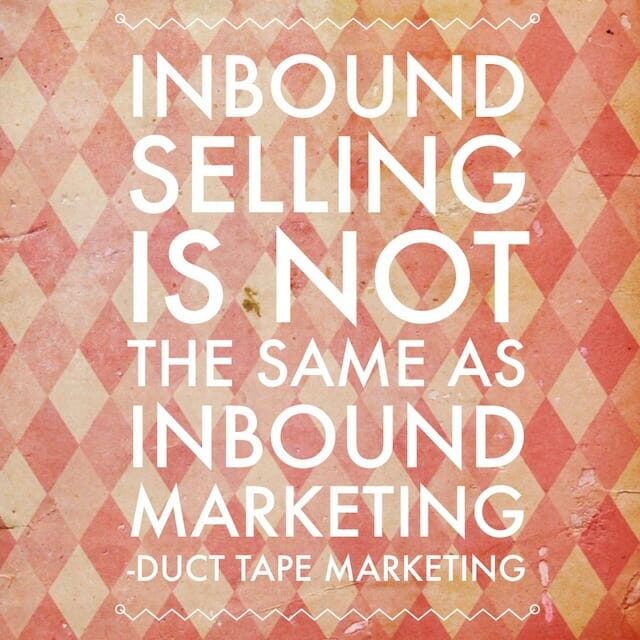In my forthcoming book Duct Tape Selling (Portfolio May 15th) I make the case that sales professionals must think and act more like marketers. In doing so, I lay out the systems and tools I believe they need to employ in order to make this shift.
The fact that selling must take on many of the attributes of inbound marketing is inevitable and is already being embraced by a growing number of firms.
One of the things that I’ve encountered as I’ve begun to evangelize this evolution is the fact that cultural resistance to this change is huge.
By that I mean that many sales leaders see the idea that sales teams would be asked to create content and participate in social media engagement as a waste of valuable “selling time.” Many sales people, often measured and compensated on closed deals, see inbound selling tactics as more work for less pay. Many marketing leaders shudder at the idea that sales teams might be turned loose to do things that might impact the brand in ways that cannot be controlled.
But here’s the problem. The market doesn’t care that you’ve got a dysfunctional cultural attachment to the way it’s always been. The market has changed, the way people want to buy has changed and you’ve got to change with it.
I believe that facilitating this change and teaching organizations how to integrate inbound marketing, outbound marketing and inbound selling is one of the most exciting opportunities that exists today for leaders, trainers, consultants and coaches alike.
Marketing will never be an integrated function until sales is using inbound strategies and tactics as an extension of and in conjunction with marketing.
I do see some sales teams becoming a little more inbound right now in one of three ways. Rogue sales people are creating content, employing social media and building authority on their own out of desperation. Sales departments are beginning to offer crude versions of “social selling” training, which often begins and ends with how to mine LinkedIn for leads. Marketing departments are reaching out to their sales teams asking them to provide blog posts for the company blog.
I suppose any of the above is better than “always be closing,” but they miss the potential of this shift in business by miles.
In my opinion an inbound selling plan, along with the strategies, tactics and training to implement this plan, should flow directly from the inbound marketing strategies, tactics and training already in place. (Of course I realize this makes some assumptions.) This is not to suggest that marketing should dictate what inbound selling looks like, but it certainly should have a hand in orchestrating the integrated efforts.
This is the only way to create an overall experience that meets the customer on the journey they want to take.
The shape this plan takes will depend largely on the size of the task at hand. If an organization needs to overcome a long standing divided sales and marketing culture, the work required will be significant. In these instances, it might be wise to start small with a pilot program that might gain traction without causing so much initial disruption.
If your organization has already come to realize the need for this change, it might be as simple as creating several new processes that make it easier for sales to curate, personalize and share content.
Know this however; inbound selling is not the same as inbound marketing. Inbound selling is the act of taking the information and outreach created by inbound marketing efforts and tailoring it in ways that creates insight for the individual customer or prospect. Social selling is the act of discovering ways to go deeper into the network of individual clients in order to provide more useful connections and engagement on a case-by-case basis.
For example, marketing may create a series of blog posts detailing emerging trends in an industry and the individual sales person might access quotes and comments from those blogs posts to write individual email answers to prospects or provide individual updates to select prospects.
Marketing may turn these insights into a research study or white paper and the individual salesperson might take the ideas and curate additional content relevant to the industry and operation of an individual prospect.
Facilitating this change is the next social media gold rush.


